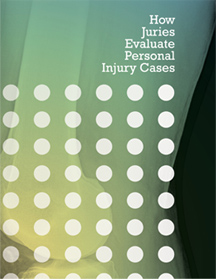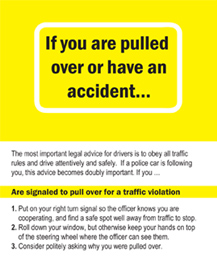Playground safety inspection checklist
Playground fall accidents are usually the result of some defect in the playground equipment or premises, or the lack of adequate supervision by responsible adults. For a playground personal injury case, the physical conditions and layout must be thoroughly documented for evidence preservation. Head injury and other serious physical injuries may be the result of poor or inadequate maintenance of the surface materials. Because this condition can be readily corrected after the incident, site inspection should be conducted as soon as possible after the accident injuryt. If a playground safety expert is not readily available for this preliminary inspection, then all of the equipment and grounds should be extensively photographed.
The following technical checklist highlights the potential problem areas in playgrounds. In a playground personal injury case, the playground safety inspector or the evaluating engineer will often use such a checklist to evaluate the playground and premises.
Playground safety inspection checklist
1. Is the equipment installed over a hard surface such as concrete or asphalt?
2. Is there loose fill material such as sand, sawdust, or gravel? What is the condition?
3. Is there unitary resilient material, such as rubber mats? Is there a manufacturer’s name or imprint on the face or underside? What is the condition of the mat?
4. Are there cracks or holes in the surfacing material?
5. What is the thickness of each of the surfacing materials? Is there sufficient depth of surfacing material in the use or fall zones?
6. If the surface material is a loose fill, is there any glass or debris in the fill material? Is it compacted? Is it uniform in thickness in the use areas?
7. Are the use and fall zones clearly defined?
8. Is the equipment crowded together so that fall zones overlap? Is there sufficient spacing between the equipment for safe operation?
9. Is the playground separated into areas by age group, types of equipment, active or passive play? Is the type of equipment appropriate for the intended age group?
10. Do the activity areas have paths that permit easy travel between the areas? Is there unobstructed vision for the children? Are there clear lines of sight for supervising adults?
11. Is there adequate space for the children to exit equipment such as slides or merry-go-rounds? Are the exit zones clear of obstructions?
12. Is the playground separated from adjacent streets by fences, shrubs or barriers? Are these in good repair?
13. Are there any pieces of equipment or other installations with angles or openings that could trap a child’s head? Have you check each suspect area with the appropriate template?
14. Have guardrails of at least 30 inches in height been installed on equipment platforms used by pre-school children? On equipment used by school age children, have 48 inch guardrails been installed?
15. Are handrails, grips and bars sized and shaped so that children can grip them? Are these safety features exposed to direct sunlight so that they become too hot to be used? Are the ends of such rails and grips returned to the side of the equipment?
16. Are there loose, damaged or missing supports, anchors or footings?
17. Are there loose or missing nuts, bolts or other connectors?
18. Do any of these bolts, nuts or fasteners protrude in such a manner that they can cause injury?
19. Are there missing or broken rails, steps or seats? Are there hard edged seats on the swings or other moving equipment?
20. Are there any bent, warped, rusted or broken components? Have any plastic sections become broken or cracked?
21. Are there any missing protective caps on bolts and tubes?
22. Are there any sharp edges or worn points due to wear or breakage?
23. Are there any deformed hooks, shackles, rings, links or other connectors?
24. Are the swing hangers worn or damaged?
25. Is there any indication of worn bearings?
26. Is there an apparent lack of lubrication on moving parts?
27. Are there exposed joints or springs that could cause a pinch or crushing injury?
28. Do any of the wood structures have members that are splintered or deteriorated? Is there any indication of dry rot or insect infestation?
29. Are there any cracks or holes in the surfacing materials?
30. Are there environmental conditions such as poor drainage, roots or rocks that could cause injury?
31. Is the playground equipment routinely inspected? Are the fall zones subject to routine inspection and maintenance?
32. Are the activities in the playground supervised by attendants? Is there a restriction prohibiting unsupervised use? Are there any warnings or other restrictions posted in the playground?
33. Has each piece of equipment been photographed and its general description noted?
34. Has the position of each piece of equipment and the distance to adjacent pieces been measured?
35. Do all use or fall zones have the same surfacing material? Have the depth, compaction and other characteristics of the material been documented?



